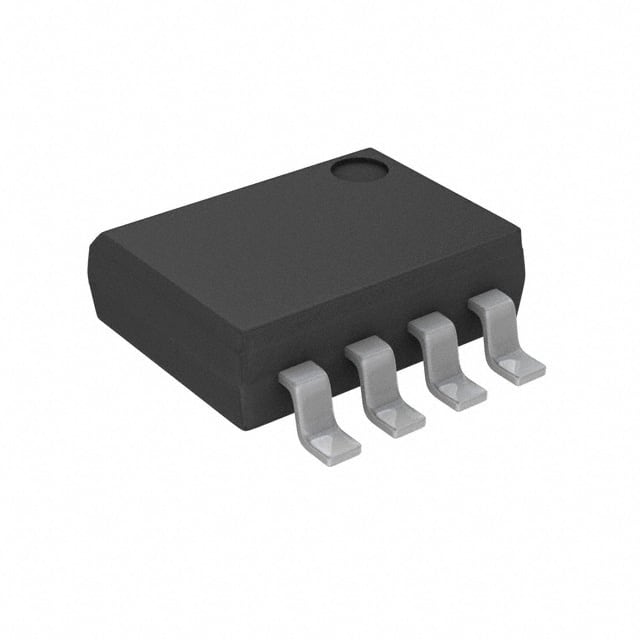Viz Specifikace pro podrobnosti o produktu.

RM24C128C-LSNI-T
Product Overview
Category
RM24C128C-LSNI-T belongs to the category of non-volatile memory devices.
Use
This product is primarily used for data storage in various electronic devices such as microcontrollers, embedded systems, and consumer electronics.
Characteristics
- Non-volatile: The data stored in RM24C128C-LSNI-T is retained even when power is removed.
- High capacity: This device has a storage capacity of 128 kilobits (16 kilobytes).
- Low power consumption: RM24C128C-LSNI-T operates on low power, making it suitable for battery-powered devices.
- Fast access time: It offers quick read and write operations, ensuring efficient data handling.
- Reliable: The memory cells are designed to withstand multiple read and write cycles without degradation.
Package
RM24C128C-LSNI-T is available in a small outline integrated circuit (SOIC) package.
Essence
The essence of this product lies in its ability to provide reliable and non-volatile data storage in a compact form factor.
Packaging/Quantity
RM24C128C-LSNI-T is typically sold in reels containing a specified quantity of units. The exact packaging and quantity may vary depending on the manufacturer.
Specifications
- Memory Capacity: 128 kilobits (16 kilobytes)
- Interface: I2C (Inter-Integrated Circuit)
- Supply Voltage: 1.7V - 5.5V
- Operating Temperature Range: -40°C to +85°C
- Data Retention: Up to 200 years
- Write Endurance: 1 million write cycles
Detailed Pin Configuration
- VCC: Power supply voltage
- SDA: Serial data input/output for I2C communication
- SCL: Serial clock input for I2C communication
- WP: Write protect pin (optional)
- GND: Ground
Functional Features
- Random access: Allows reading and writing of data at any memory location.
- Page write mode: Enables simultaneous programming of multiple bytes in a single operation, improving efficiency.
- Write protection: The optional write protect pin can be used to prevent accidental modification of stored data.
- Software write protection: Certain memory areas can be protected by software commands, enhancing data security.
Advantages and Disadvantages
Advantages
- Non-volatile storage ensures data retention even during power loss.
- High capacity allows for storing large amounts of data.
- Low power consumption extends battery life in portable devices.
- Fast access time enables quick data retrieval and updates.
- Reliable performance with high endurance and long data retention period.
Disadvantages
- Limited storage capacity compared to other memory technologies like NAND flash.
- Slower write speed compared to volatile memory types like SRAM.
- Higher cost per bit compared to some other memory options.
Working Principles
RM24C128C-LSNI-T utilizes electrically erasable programmable read-only memory (EEPROM) technology. It stores data using floating-gate transistors that can be electrically programmed and erased. The I2C interface allows for easy communication with the device, enabling read and write operations.
Detailed Application Field Plans
RM24C128C-LSNI-T finds applications in various fields, including: 1. Industrial automation: Used for storing configuration data, calibration values, and event logs in industrial control systems. 2. Automotive electronics: Employed for storing vehicle settings, sensor data, and firmware updates in automotive electronic control units. 3. Smart home devices: Utilized for storing user preferences, device settings, and operational data in smart home automation systems. 4. Medical devices: Used for storing patient data, device settings, and firmware updates in medical equipment.
Detailed and Complete Alternative Models
- RM24C256C-LSNI-T: A higher capacity variant with 256 kilobits (32 kilobytes) of storage.
- RM24C64C-LSNI-T: A lower capacity variant with 64 kilobits (8 kilobytes) of storage.
- RM24C512C-LSNI-T: An even higher capacity variant with 512 kilobits (64 kilobytes) of storage.
These alternative models offer different storage capacities to suit specific application requirements.
Word count: 529 words
Seznam 10 běžných otázek a odpovědí souvisejících s aplikací RM24C128C-LSNI-T v technických řešeních
Sure! Here are 10 common questions and answers related to the application of RM24C128C-LSNI-T in technical solutions:
Q: What is the RM24C128C-LSNI-T? A: The RM24C128C-LSNI-T is a specific model of EEPROM (Electrically Erasable Programmable Read-Only Memory) chip.
Q: What is the storage capacity of the RM24C128C-LSNI-T? A: The RM24C128C-LSNI-T has a storage capacity of 128 kilobits, which is equivalent to 16 kilobytes.
Q: What is the operating voltage range for the RM24C128C-LSNI-T? A: The RM24C128C-LSNI-T operates within a voltage range of 1.7V to 5.5V.
Q: What is the maximum clock frequency supported by the RM24C128C-LSNI-T? A: The RM24C128C-LSNI-T supports a maximum clock frequency of 1 MHz.
Q: Can the RM24C128C-LSNI-T be used in automotive applications? A: Yes, the RM24C128C-LSNI-T is designed to meet the requirements of automotive applications.
Q: Does the RM24C128C-LSNI-T support hardware write protection? A: Yes, the RM24C128C-LSNI-T provides hardware write protection features to prevent accidental data modification.
Q: What is the endurance rating of the RM24C128C-LSNI-T? A: The RM24C128C-LSNI-T has an endurance rating of at least 1 million write cycles.
Q: Can the RM24C128C-LSNI-T operate in harsh environmental conditions? A: Yes, the RM24C128C-LSNI-T is designed to withstand a wide temperature range and is suitable for harsh environments.
Q: Does the RM24C128C-LSNI-T support sequential read operation? A: Yes, the RM24C128C-LSNI-T supports sequential read operation, allowing for faster data retrieval.
Q: What interface does the RM24C128C-LSNI-T use for communication? A: The RM24C128C-LSNI-T uses the I2C (Inter-Integrated Circuit) interface for communication with other devices.
Please note that these answers are general and may vary depending on the specific implementation and requirements of your technical solution.

